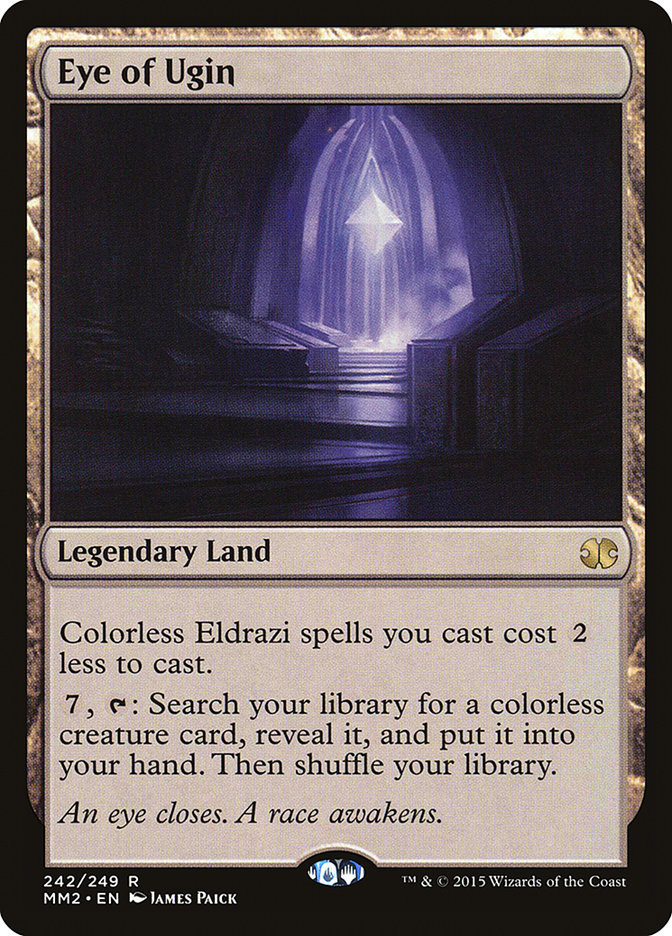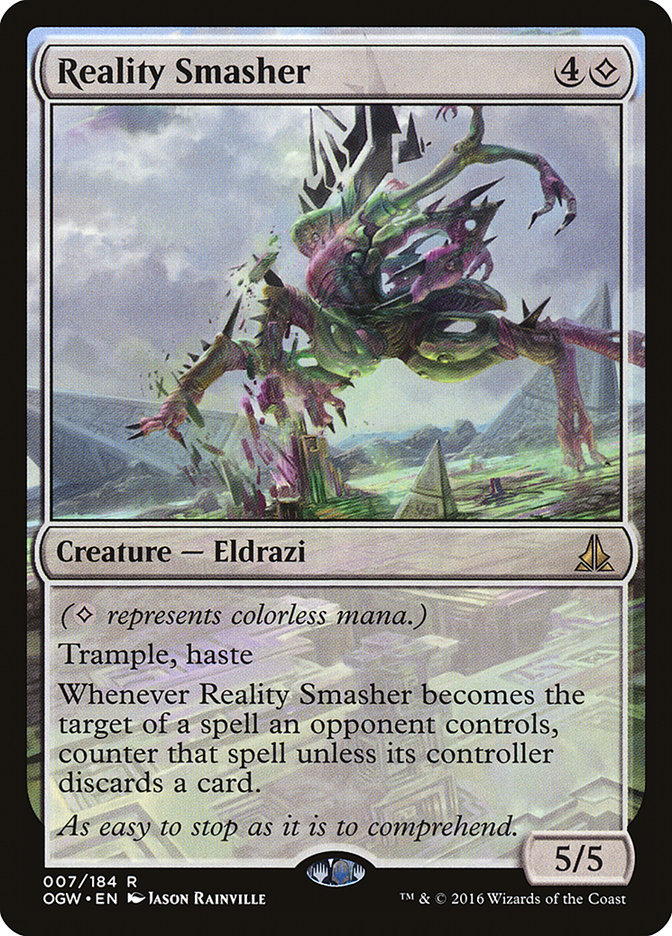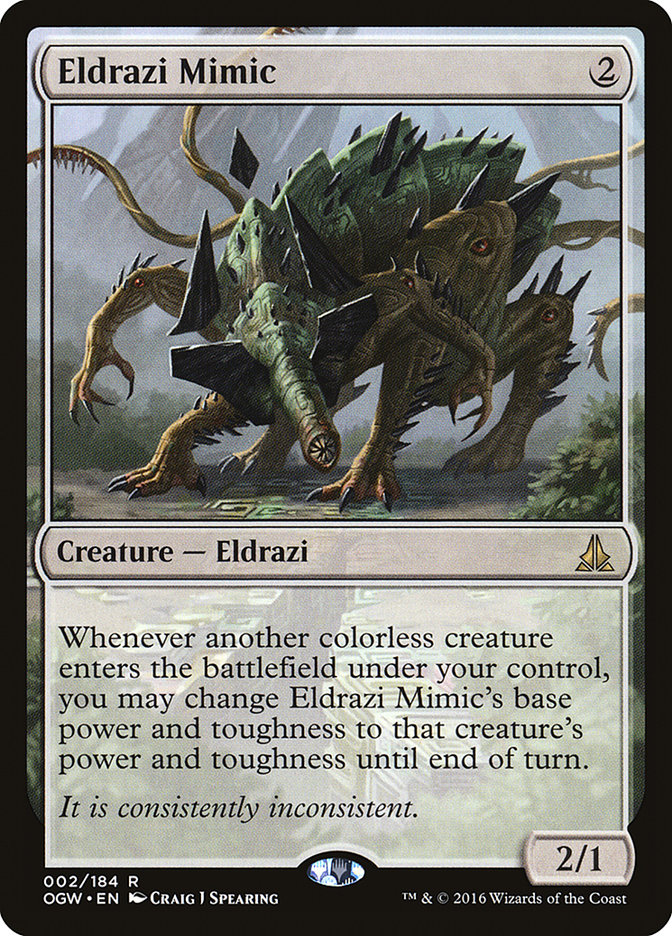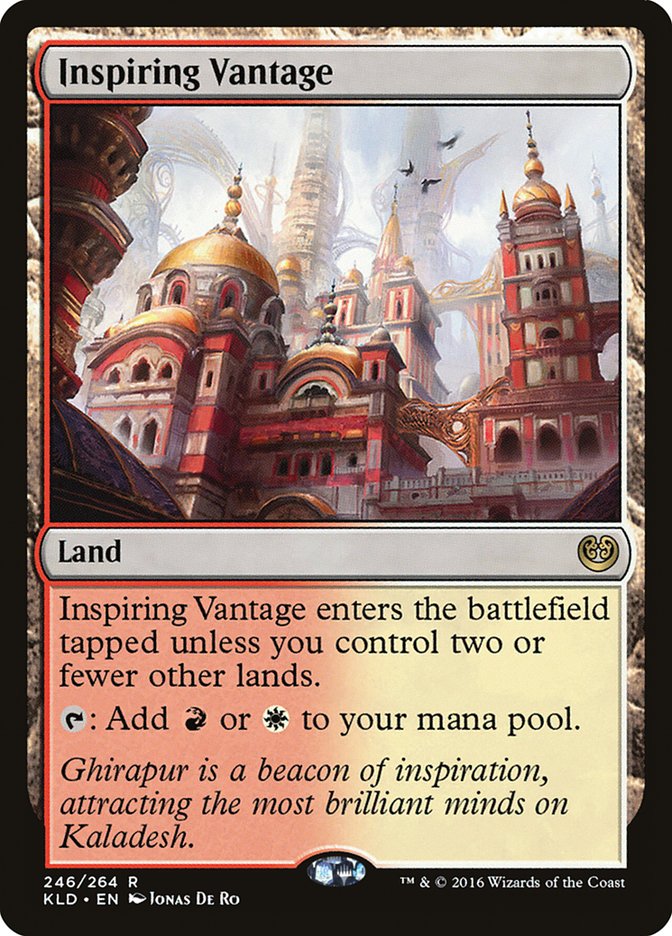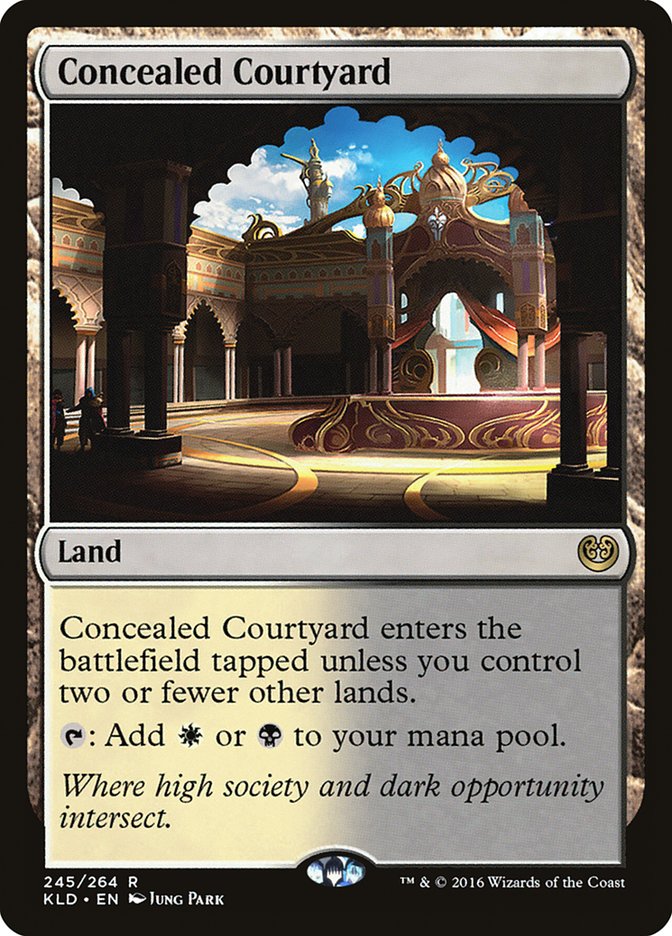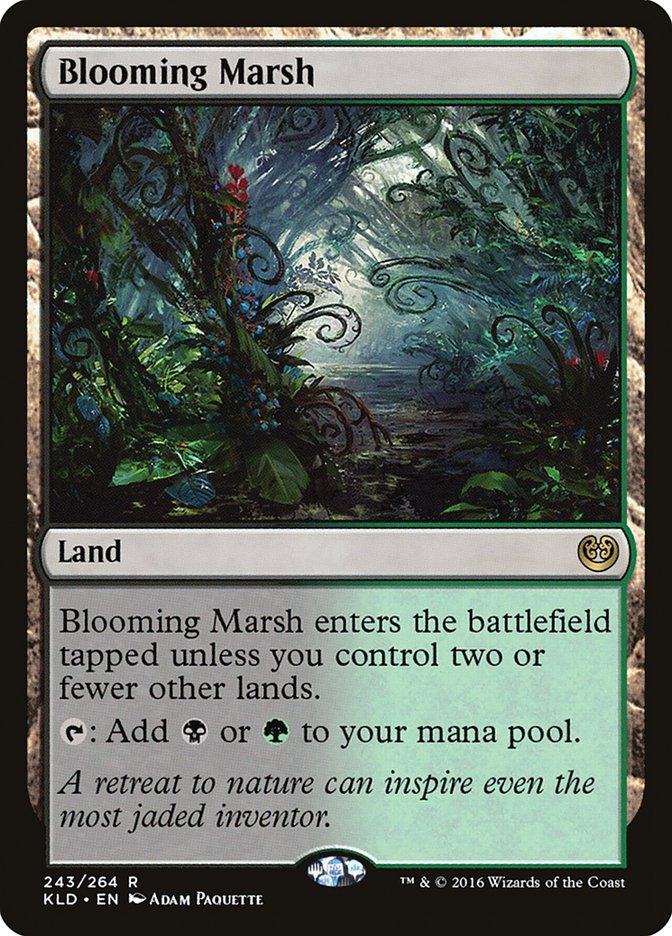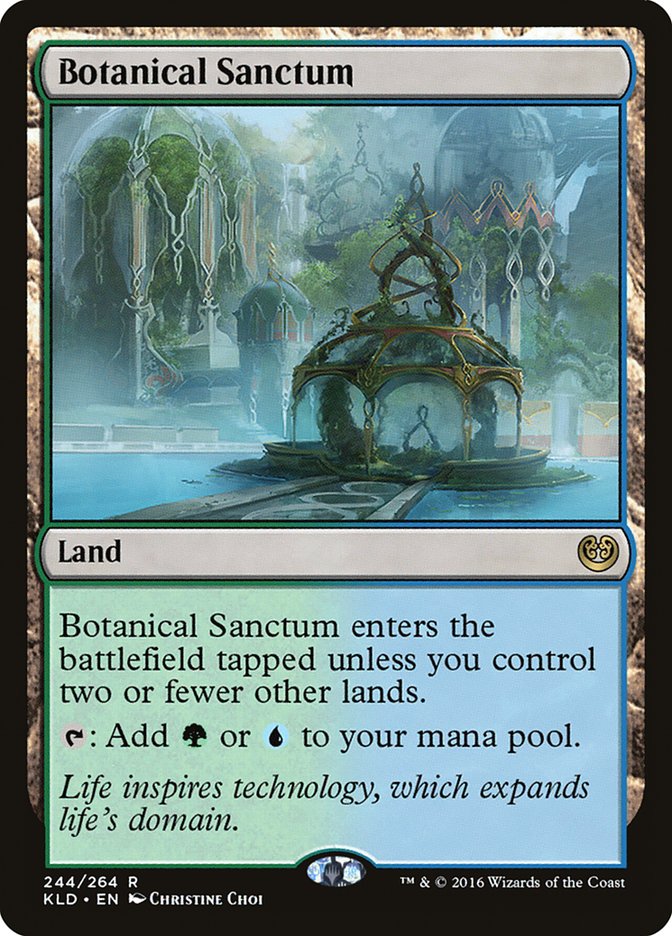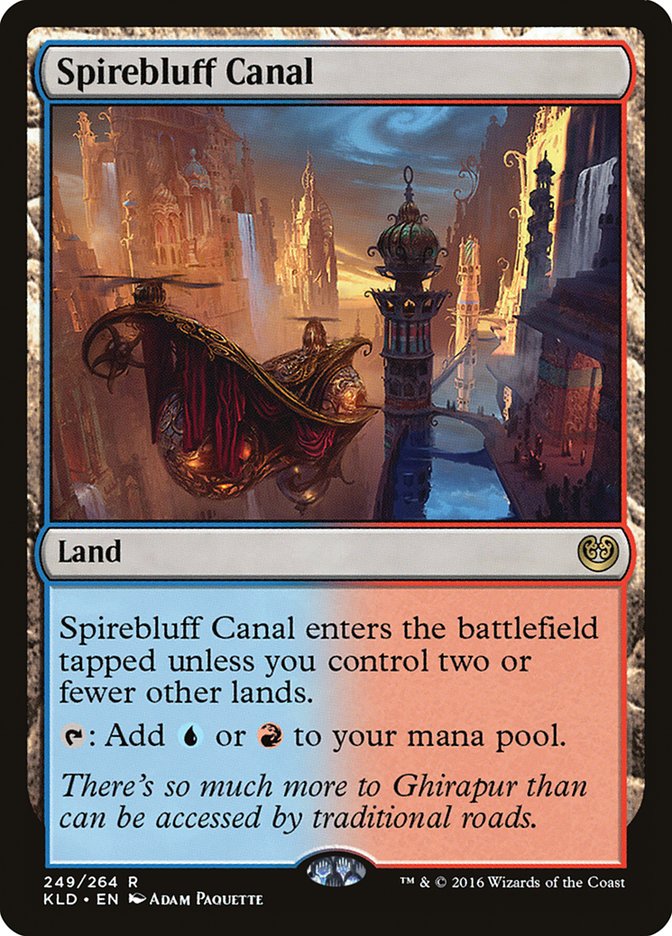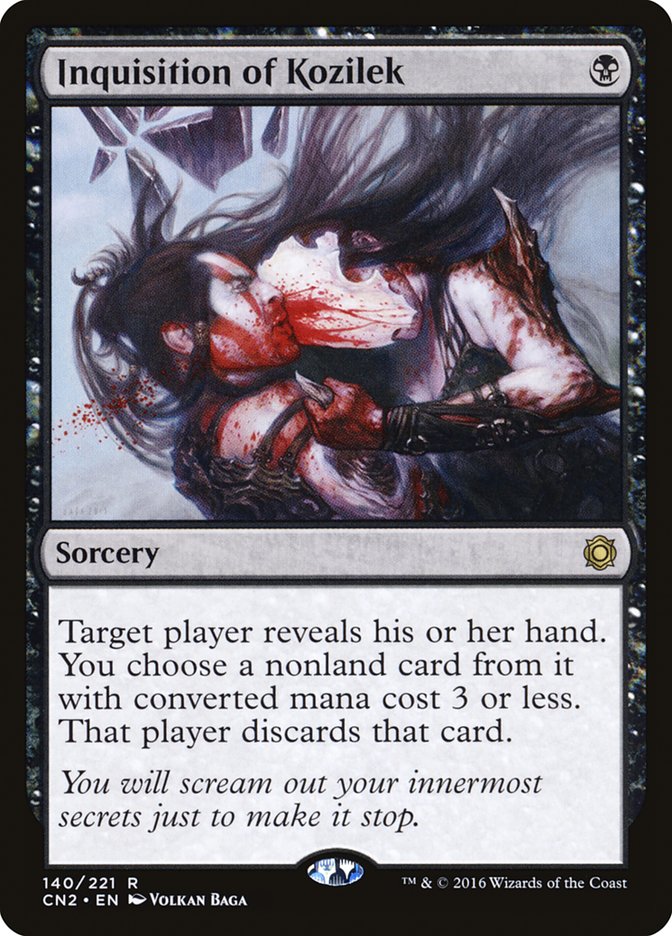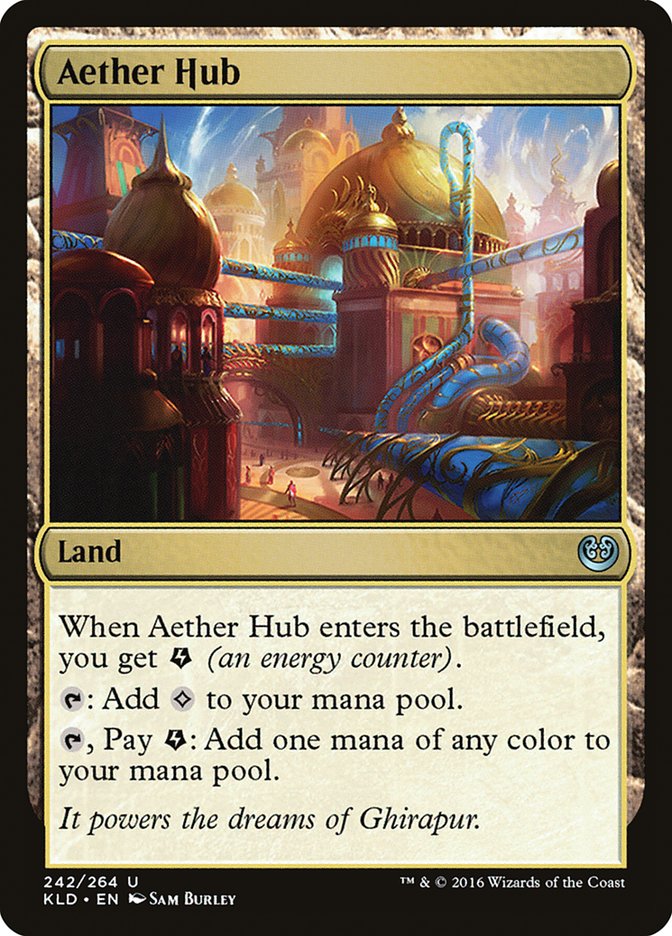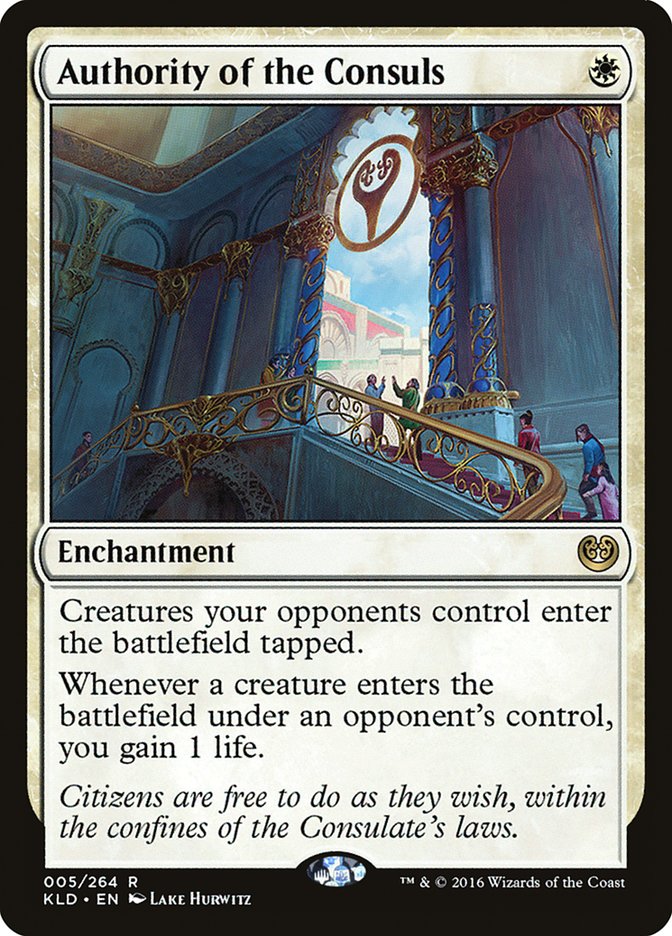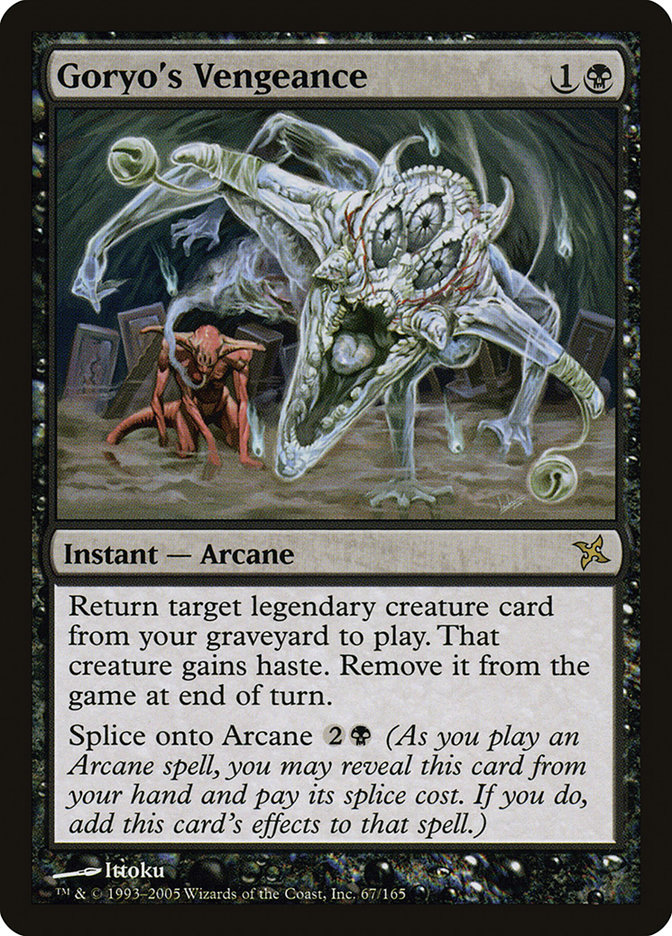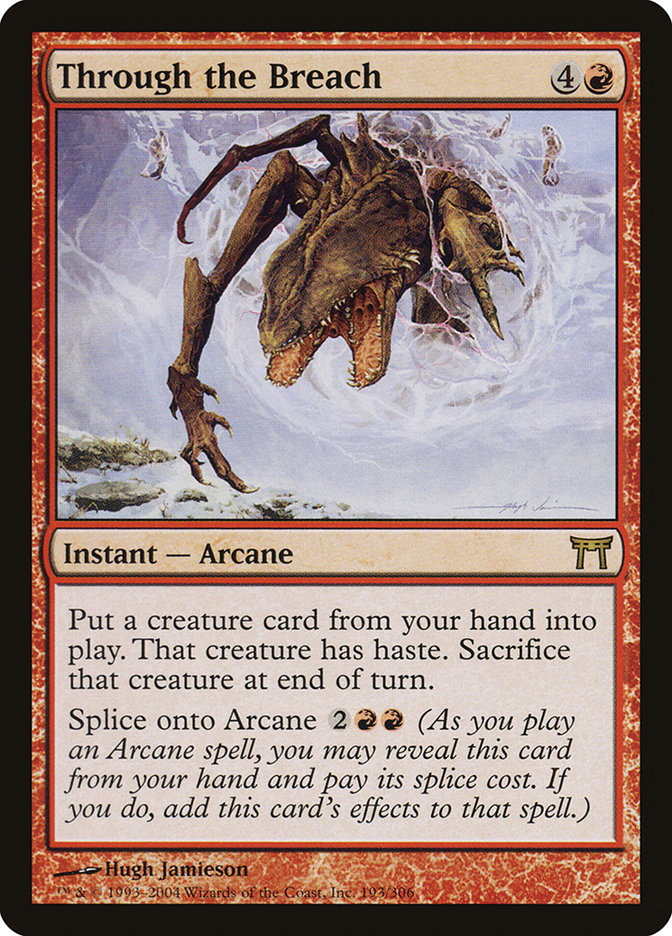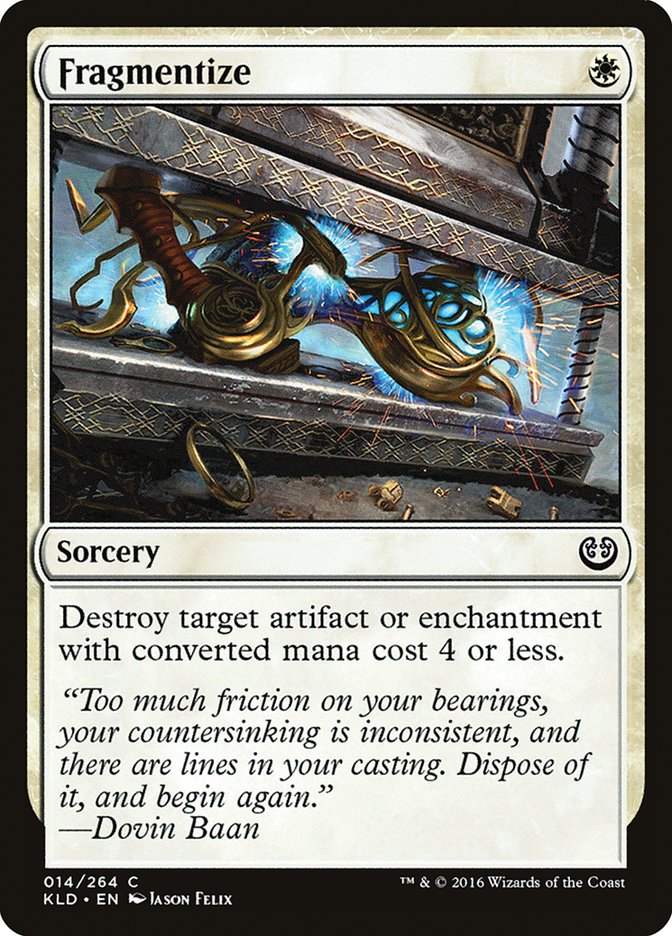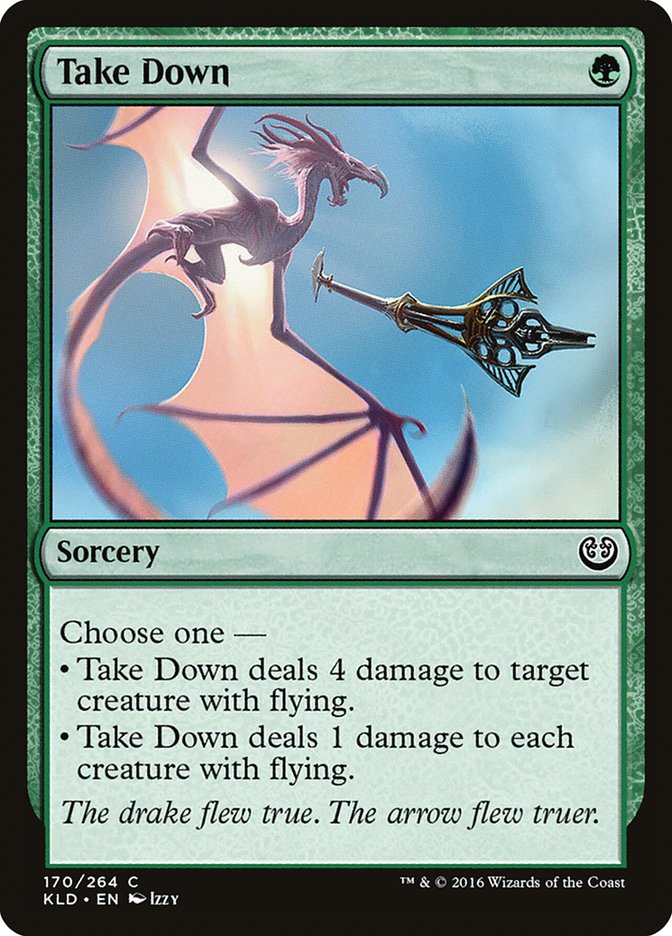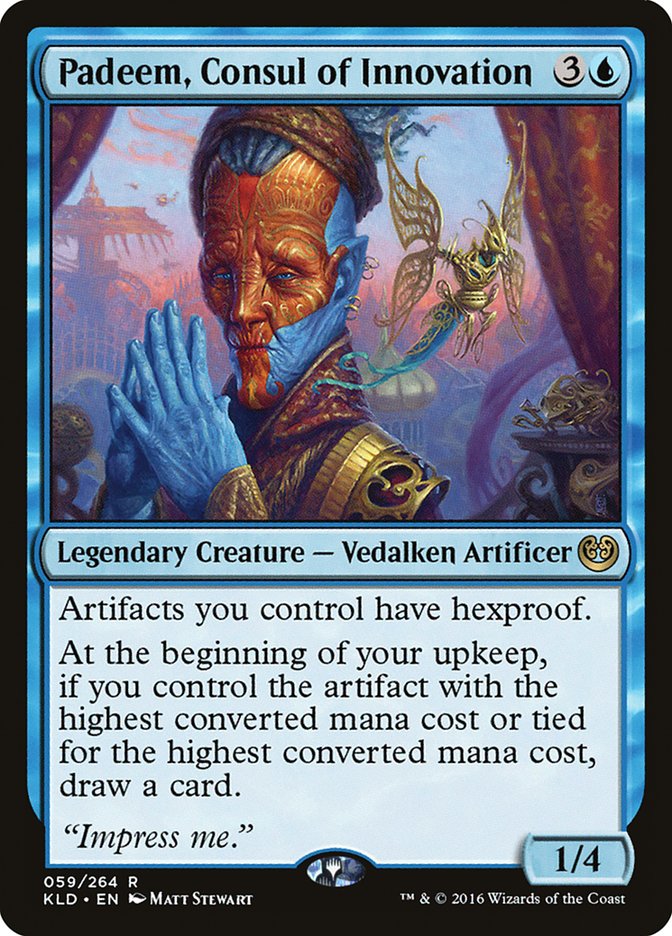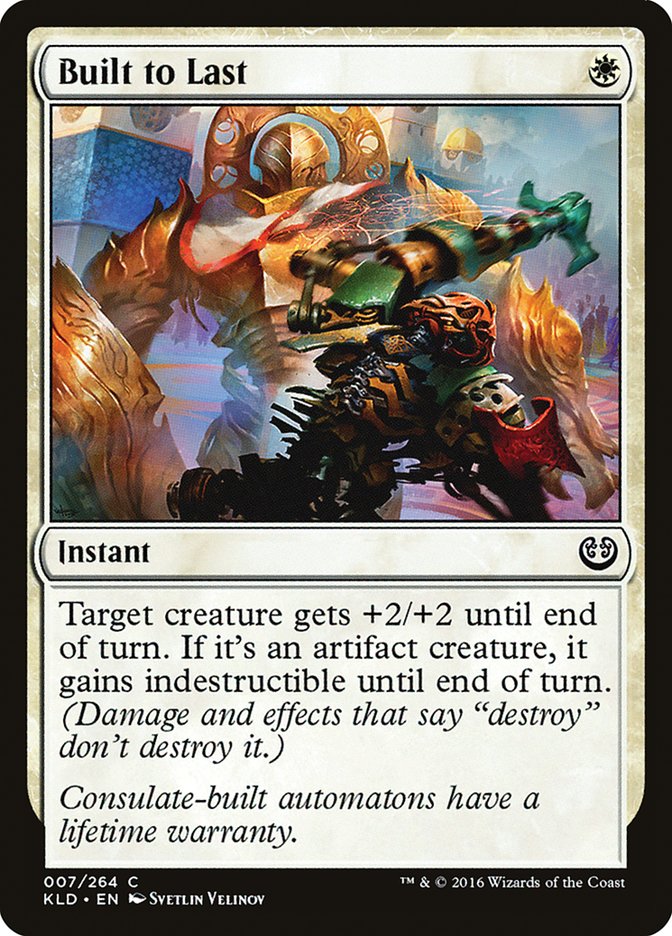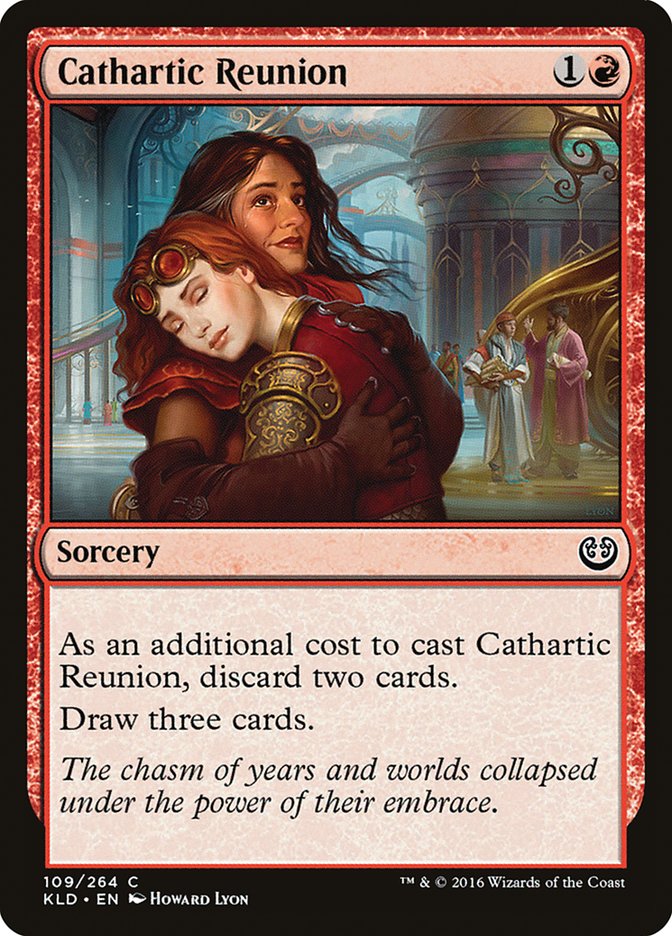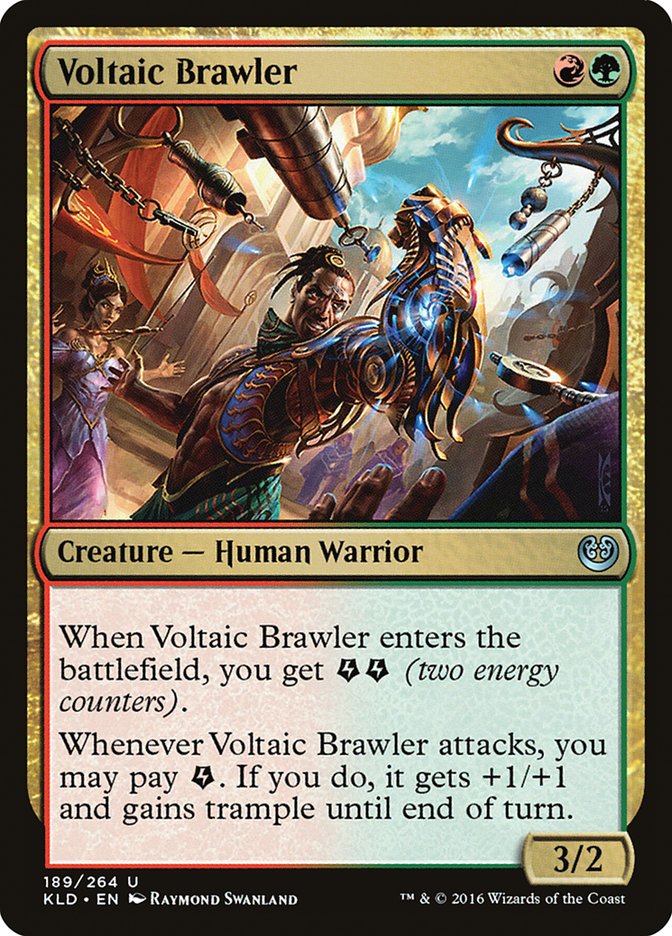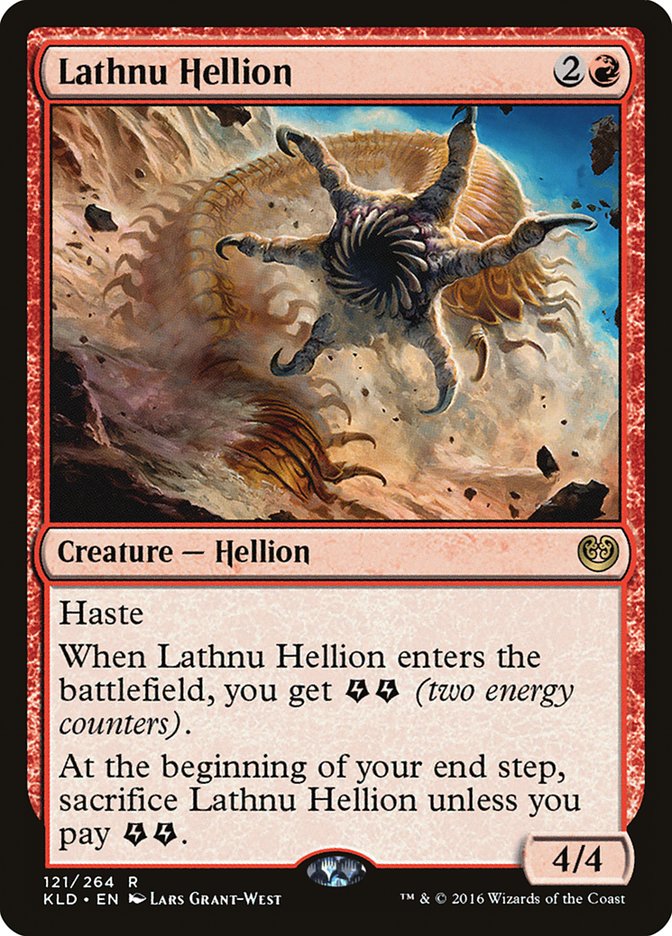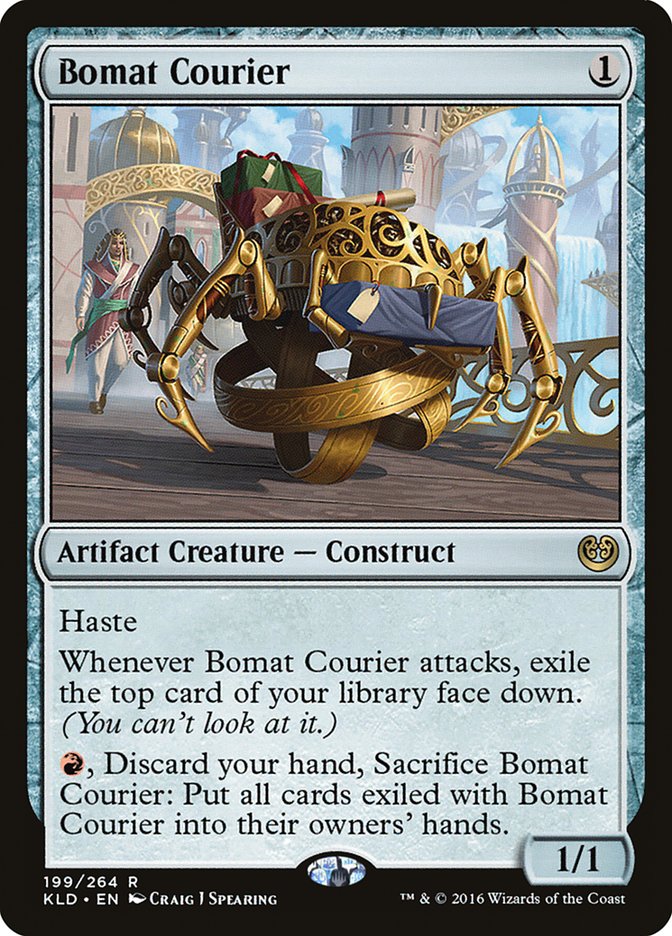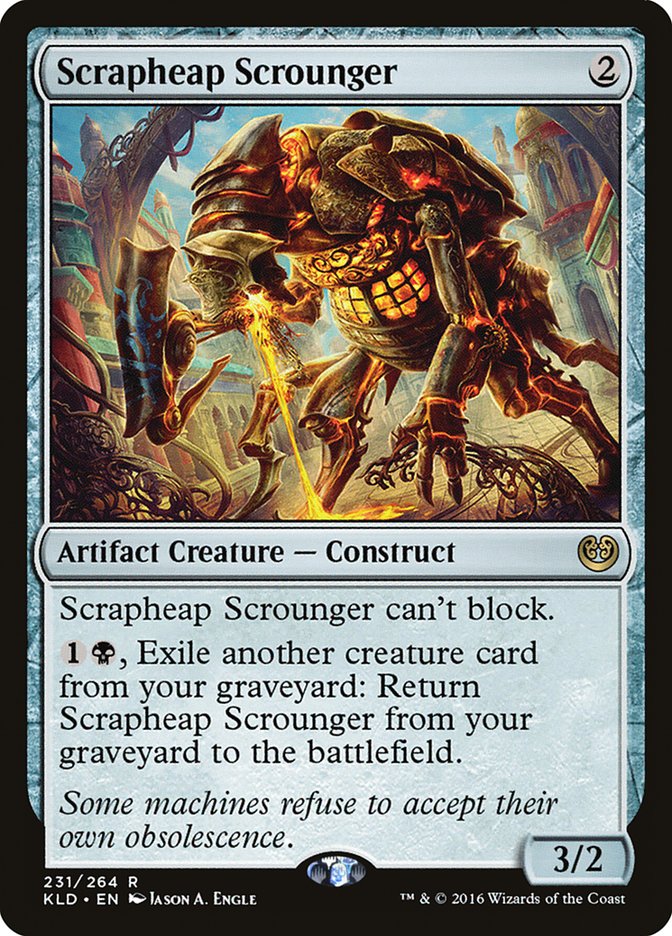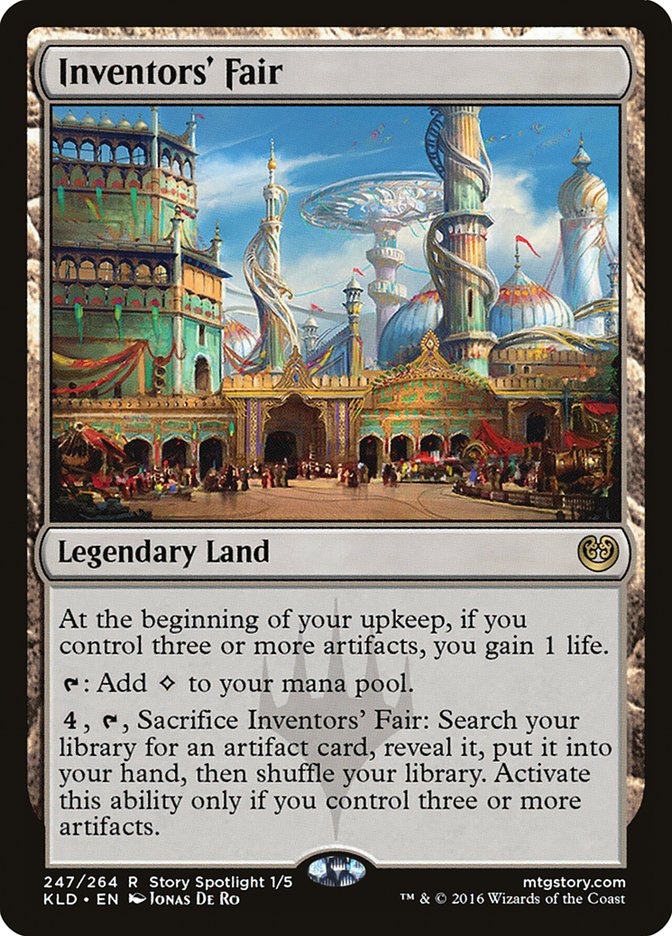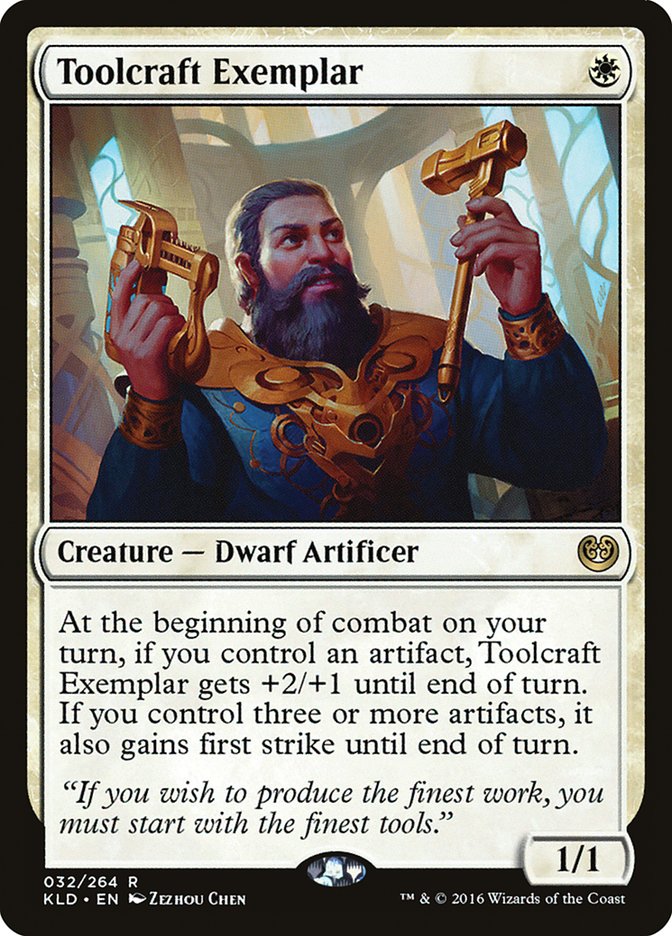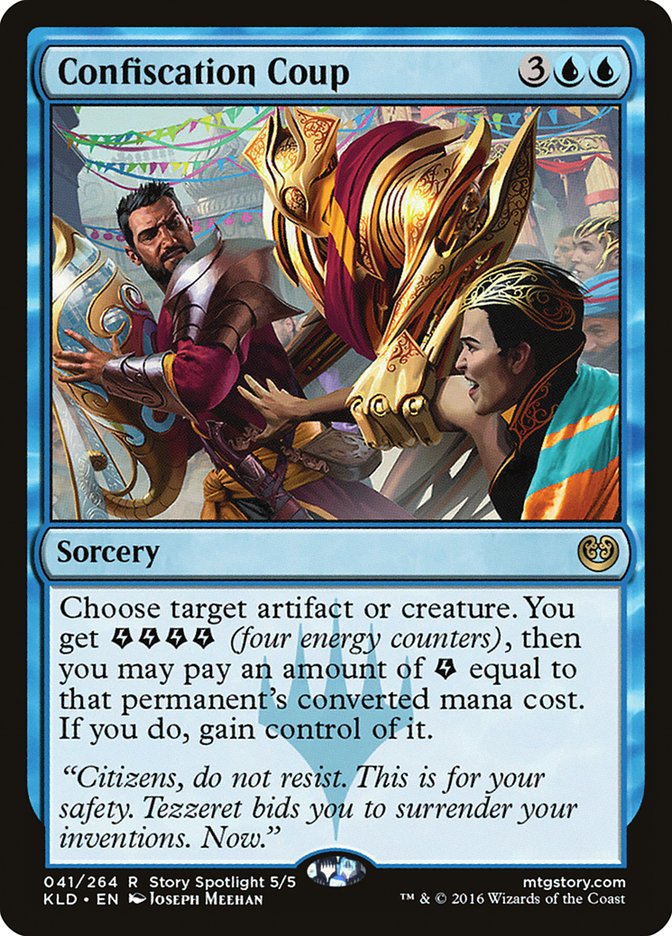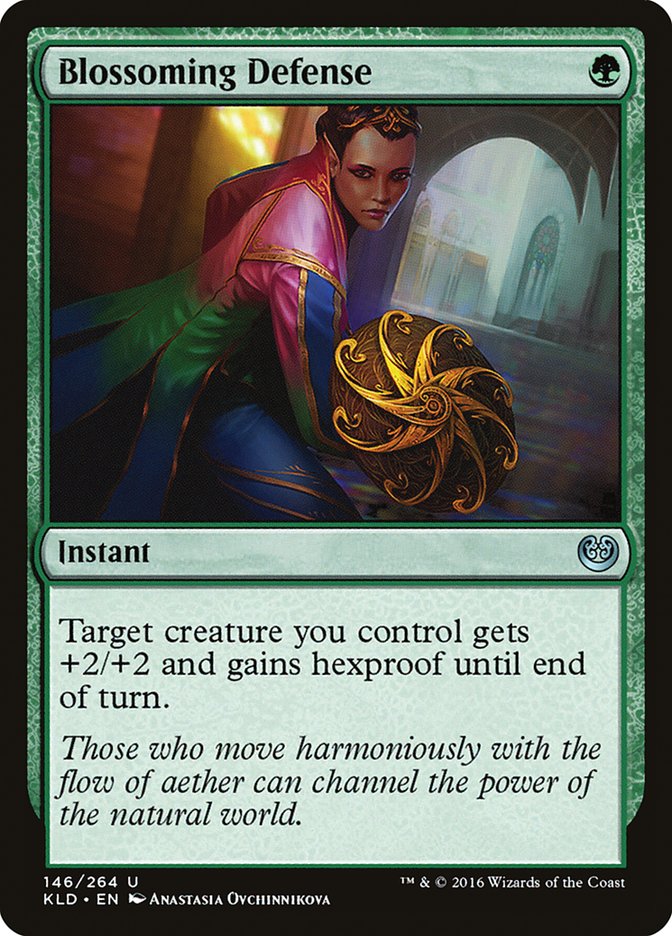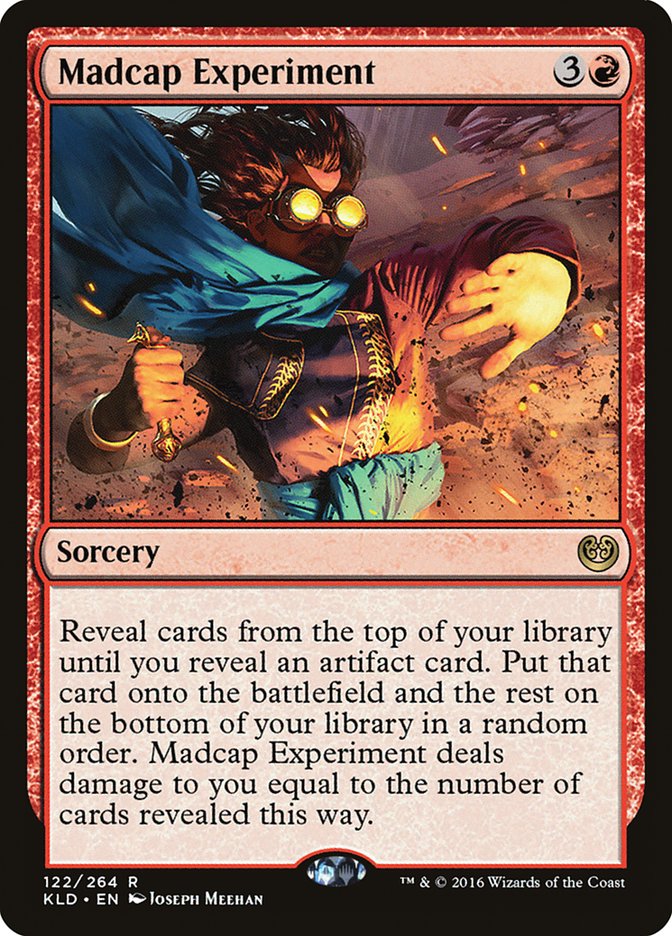I’ve gotten into a lot of conversations with people about Modern. One of the biggest ones most recently, especially with a Pro Tour around the corner, is simple: a number of people really miss having a Modern Pro Tour. As Modern fans, they would love to see more of a spotlight on the format.
For me, my Magic fandom probably has its pinnacle in Legacy, followed very closely by Draft. But as someone that is deeply invested in Magic, I’m always keeping track of what’s going on in Modern, and trying to figure out what it is that I’d like to be playing in the format. I, for one, am glad to see the removal of a Modern Pro Tour from the Pro Magic world because I didn’t really much care for what it did to the design of new cards. In order to make a Pro Tour, which is essentially a showcase for the new cards, actually show off those new cards, they generally need to be pushed.
Sometimes cards pushed for Modern make for an Eldrazi Pro Tour. Whatever ends up happening, it definitely affects the design constraints of a set and adds to the difficult burden already placed on Wizards R&D. To the fans of Modern, I’d always remind them that the SCG Tour® has a lot of Modern events and there are lots of Grand Prix, not to mention all of the smaller events as well.
All of that being said, I was more than a little bit surprised to discover just how many cards struck me as Modern-playable as I was going over the Kaladesh cards. Again and again, I kept thinking, “Well, this might make the cut,” to a degree that made me more than a little shocked.
It doesn’t look to me like they’ve tried to push things intensely for Modern, specifically. It just somewhat looks like perhaps they’ve gotten there.
I tend to be somewhat liberal when it comes to speculation on cards, so keep that in mind. That being said, I’d rather try out a new card, discover through testing that it doesn’t work, and then discard the idea than never consider the idea in the first place.
Let’s get started!
Cards for (Almost) Anyone
Enemy-color lands are a huge addition to any deck that needs options. The clear front-runner in this is Spirebluff Canal. Lightning Bolt on turn 1 is a huge option, and then adding to that the access to immediate blue, the de facto “best color” in Magic – at least in the context of older formats – and you have a winning combination.
Each of these has real value, of course, but it doesn’t mean that you are going to see them crop up in every Modern deck that can play them. Already, you don’t see them played consistently in Modern decks. Take a typical Modern Burn deck. You could simply run 4 Copperline Gorge, but this wasn’t a common choice; typically a Burn deck would run either two copies or zero. The same questions are going to be asked of basically every deck. What are the options that make sense, and what is the cost?
The biggest cost for these is affecting the later plays, of course.
After Spirebluff Canal, the next most important of these, I believe, will be Concealed Courtyard, and that is for a simple reason:
Access to both of these plays can be wildly important, especially against the most aggressive of decks.
Moving onto the next general-use land:
Typically, this will be seeing play in any of the decks that you might have previously seen using Tendo Ice Bridge. There aren’t many of these decks, Lantern Prison being occasionally one of them, but it does exist. Other than that, I don’t expect to see much use for this, though you will occasionally see it cropping up in a few decks that employ Energy and you’ll be even more likely to see it after Aether Revolt comes out next year.
All six of these lands have the ability to make numerous colors with very little drawback, and as such, they all have the potential to find a home in any number of decks.
To the Sideboard
Sideboard cards aren’t the sexiest cards to talk about, but they are important. Impressively, there are a number of interesting cards to take note of.
This card can come out on turn 1 and greatly stymie the power of cards like Goblin Guide, but it also has an impressive effect on several cards:
There are other cards in addition to these, but all of them have something important in common: the granted ability of haste on the card is potent. Now, the effect of Authority of the Consuls is replicated in any number of cards, but this is the only one that costs one mana. I don’t expect this to be a wildly used card, but it will be in arsenals for those moments when it is the weapon for the job.
Fragmentize benefits from being incredibly cheap, regardless of it being a sorcery. There are practically no expensive spells in Modern, and those that are more expensive, like Wurmcoil Engine in Tron, aren’t exactly the best to be removed with a fancy Disenchant-style effect. At one mana, this card is much like Inquisition of Kozilek compared to Coercion or Distress (or Thoughtseize if you count the life as an extra cost): sure, you can’t get everything, but a discount makes it worthwhile.
Whether it is a swarm of spirits from Lingering Souls or a bigger flier like Restoration Angel, Take Down is a versatile potential answer for green. While I wouldn’t necessarily advocate for it in the matchup, it also could be remarkably effective versus Vault Skirge and a bunch of Nexuses, though sideboarding this card might just be a sign of desperation in that case. Still, there are a surprising amount of fliers in Modern, and sometimes, a surprising amount of little tiny ones. Like Authority of the Consuls, it’s a narrow card, but there are a slew of targets for the card.
It was over ten years ago that I unleashed Scepter-Chant on the world. When I did, in the sideboard of the deck, I included Leonin Abunas, in part because it was incredibly difficult to kill and could play defense, but mostly because it protected my Isochron Scepter.
Padeem can do the same kind of work. In addition to that, though, in a deck that just naturally includes artifacts, Padeem can be a hard-to-kill draw engine. In the sideboard of a deck like Affinity, it could be a card that keeps your precious cards safe from Ancient Grudge, or it could simply be a way to keep gas in the engine. In other decks, it could play the role Abunas did for me: keeping your key card safe, all while being a hard card to remove, especially if you don’t have other real targets for creature removal, putting your opponent into a Catch-22.
If this card doesn’t end up making some sideboards, I’ll be surprised.
When I saw this card, I immediately thought back to when Paul Rietzl recently piloted Tempered Steel at Pro Tour Fate Reforged. Built to Last probably wouldn’t make the cut in that deck, but I could imagine the card seeing play as a potential sideboard card that could add an extra punch to the deck while simultaneously protecting the odd important card from Destructive Revelry or Terminate. While we don’t often think of the Affinity package as potentially being white, it’s worth remembering it has been played as such in competitive decks, even recently.
Extra Tools for the Old Guard
There are a few cards that can easily find their way into any number of already existing decks.
Dredge is the clear winner here. In addition to that, though, any deck that is hungry to fill its graveyard and isn’t afraid of a Spell Snare could make use of this. Dredge might be the best option, but other “graveyards-matter” strategies might also do the same, even if they don’t get quite the payoff that Dredge does.
In the Zoo decks that are out there, Voltaic Brawler might practically read “I’m a 4/3 Trample Killer of Opponents.” Zoo isn’t a big archetype these days, but several players – Kyle Boggemes among them – were running around getting plenty of wins on the back of intensely aggressive attacking decks. While these have largely gone out of favor because of Death’s Shadow, Voltaic Brawler is another tool for those decks.
While this is most likely a card that I’d imagine in creature-heavy builds of Burn (an idea that I know some Burn players loathe), it still is worth remembering that an unopposed Lathnu Hellion is worth eight damage for only three mana. That’s pretty insane. Pair that with, say, Voltaic Brawler, and you’re talking twelve damage. Now, of course a Lathnu Hellion is a card your opponent will want to kill, but can’t the same be said for basically every creature in this kind of deck?
While it may be small, the Bomat Courier seems to me like it could easily be a part of Burn or Affinity. Burn is a harder sell, but Bomat Courier could supply a damage-based source of card advantage for that deck. The easier sell is Affinity, where crappy 0/2 creatures often end up ending a game. Adding a haste creature to the mix for Affinity could certainly be in the range of the deck, particularly since Thoughtcast has seen play in the deck on more than one occasion and completely emptying one’s hand is a part of the Affinity gameplan.
If you don’t care about blocking, this card can go on for days!
While Path to Exile can knock this card out cold, again, in the decks you’ll be playing this card, they’ll have plenty of other targets. Among the truly impressive parts of the card is the ability to rise from the grave at the end of an opponent’s turn, completely messing up anyone trying to take control of a game. It’s easy to imagine a deck playing its fair game suddenly having to reckon with a well-nigh “indestructible” artifact creature. It doesn’t say “Horror” anywhere on the card, but you can still queue the agonized screams.

There aren’t very many artifact-heavy decks, but there are a few. Affinity is certainly one, and I can imagine this being used to get the game-winning Cranial Plating or get an Etched Champion to stave off the battlefield, or to bring forth a potent sideboard card like Grafdigger’s Cage or Spellskite.
For other decks, like Krark-Clan Ironworks or Lantern Prison, it is likewise easy to imagine the card having a home. Right now, Lantern Prison is my go-to deck in Modern, and while I’m not sure I could picture fitting it into the deck due to competing colorless mana sources, it still is in the toolshed for me for that deck.
Tempered Steel-style Affinity decks, the B/W Deadguy Ale brews, and Hatebears-style decks might be able to make use of this card, which has the potential to add a sort of Wild Nacatl effect. Easy access to artifacts is important, and there are a lot of cards which are incidentally artifacts in the non-artifact decks above. Hatebears isn’t necessarily looking for the fast beater, but if it is reliable, I’m sure it wouldn’t be opposed to it, either.
The slower blue decks out there aren’t really popular with Jeskai Control featuring Nahiri, the Harbinger being the most common brand these days. You might wonder why, if I’m suggesting this card, we haven’t already seen cards like Mind Control make it into the mix.
The one reason this might make it to the main stage, albeit in small numbers is the key word of Kaladesh: artifacts. They aren’t a huge part of the metagame, but it does matter that the card can also steal a Cranial Plating, The Rack, Aether Vial, Sword of Fire and Ice, Oblivion Stone, or other miscellaneous card. It still might not be good enough, but it does merit consideration.
It’s not Vines of Vastwood, but even so, Blossoming Defense can be another “quasi”-Vines or Apostle’s Blessing. It doesn’t stop an opponent’s attempt to target their own creature like Vines (not that that happens much anymore) and it can’t make a creature unblockable, but it does pump a creature for one mana, which neither of those cards can do. Add this to the list of pump spells to have to consider when building your Infect deck.
And Some Truly New
Aetherworks Marvel is certainly on a lot of people’s radars. Whole decks could be made out of this, and while it requires a fair amount of support to make work, this kind of effect is truly shattering. Over on the Premium side, Shaun McLaren deftly covered this card in full. After his in-depth coverage of the card, there isn’t much more to say about it in Modern.
The clear thing we’ll likely be seeing with this card is Platinum Emperion. With this card in your deck, if it’s the only artifact, you’ll immediately go find one, not take a single ounce of damage, and have an impressive card left over to smash your opponent’s face with.
You’ll probably want several Platinum Emperion in the deck because the only real cost will be to draw it. When you balance this out against the value of being able to search out more Platinum Emperions for each Madcap Experiment, I feel like you’ll likely end up on three or four huge artifacts in your deck. What else will the deck do? I’m not sure, but you could pair the red portion with any number of other choices, from a Mardu or Jeskai shell to something less ambitious with its colors.
Reanimator decks are not new, but Refurbish allows for a new take on the idea. In the past, you’d be able to do crazy things with Goblin Welder or other unfair cards, but Wizards doesn’t let things get that out of control any more.
Refurbish can actually do a pretty good impression of a simple Resurrection. Inkwell Leviathan, Sphinx of the Steel Wind, Sundering Titan, Platinum Emperion, Wurmcoil Engine, and several other artifact creatures are worth bringing back as cheaply as this, but if creatures were all you were interested in, you’d probably end up with Unburial Rites.
The real place this card shines is in bringing back the unwieldy artifacts. While the possibilities are huge, one truly intriguing card I’ve thought of is Possessed Portal. If you’re like me, you’d probably forgotten that this card existed.
Does the game look over? If this is on the battlefield, don’t expect your opponent to be smiling as you wipe them up with whatever else you have left.
Other expensive cards to sneak into play include Spine of Ish Sah, Ward of Bones, and Staff of Nin, but I’m certain Gatherer-hounds out there can find more options.
Overview
Given the themes of the set, it is wildly unsurprising that so many artifact-related cards are in the mix in this review of Modern cards from Kaladesh. A part of me – the part that isn’t excited about Affinity-style decks – is a bit sad about this, but for the most part, I really like the way the new cards make it into the mix. There are a few possibilities that are entirely new, whether or not they pan out. More importantly, though, there are a few more options for decks that already exist, creating a real competition for space that makes decision-making for a deckbuilder or player all the more difficult.
Maybe that makes me a glutton for punishment, but that’s how I like it.
I’ve been digging into Kaladesh like mad ever since the full card gallery dropped, and it’s exciting to see that even established formats like Modern can get cracked into. It’s that element of change that has always made Magic so very fun.


